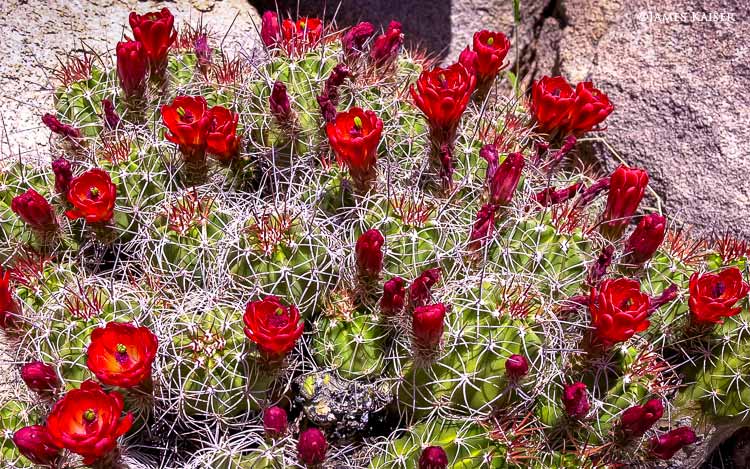
Joshua Tree wildflowers are one of the park’s most beautiful sights. For a few weeks in the spring, given the right conditions, Joshua Tree explodes in a burst of color as thousands of wildflowers bloom. Reds, yellows, purples and blues splash across the park’s muted landscape, lending a psychedelic hue to an already mystical scene. But this stunning display does not last long. Delicate and ephemeral, Joshua Tree wildflowers survive just a few weeks before wilting away in the summer heat.
Sadly, Joshua Tree wildflower blooms do not happen every year. They only occur following winters with adequate rain. If there is not enough rain, blooms will be small or nonexistant. This is a biological adaptation on the part of the wildflowers. Given the harsh nature of the desert, wildflowers appear only when conditions are favorable to their survival. Following rainy winters, Joshua Tree wildflowers flourish for a few weeks in the spring, surviving just long enough to produce seeds for the next generation. Those seeds, in turn, can lie dormant for months or years until weather conditions are just right.
To help detect perfect weather conditions, Joshua Tree wildflowers have evolved some remarkable adaptations. Some species produce seeds covered in a resinous coating that can only be removed by ample rain. This coating acts as a natural auto-timer, triggering germination only when sufficient water is available. It also protects against temporary events such as scattered showers during a dry spell, which would otherwise trick the seed into germinating. When abundant winter rain does fall, the seed’s resinous coating is removed, preparing the seed for germination.
Joshua Tree wildflowers normally germinate between September and December, but germination does not guarantee a bloom. Warm spring temperatures must follow winter rains for flower stalks to appear. When wildflowers do bloom, they often start in February at the park’s lowest elevations. As temperatures rise over the next several weeks, blooms spread to progressively higher elevations. Above 5,000 feet Joshua Tree wildflowers can bloom as late as June. Although wildflower blooms are unpredictable, some of the best blooms in recent history have occured during El Niño years, which often bring heavy winter rains to Southern California.
During Joshua Tree wildflower season, the National Park Service posts wildflower reports on their website.
Joshua Tree Wildflowers
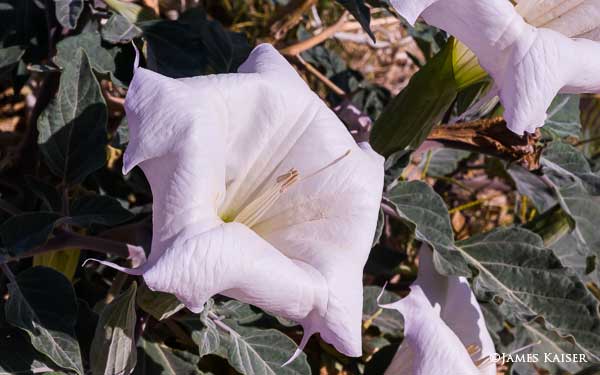
Datura
These dazzling white flowers often appear in the spring, but they can bloom at any time of year given enough rain. Its large, trumpet-shaped flowers emit a foul smell, and they are sometimes streaked with lavender depending on the variety. Datura (Datura wrightii) is famous for the role it played in the religious ceremonies of native tribes. Although extremely toxic, the plant contains large doses of hallucinogenic alkaloids that shamans would use to induce visions.
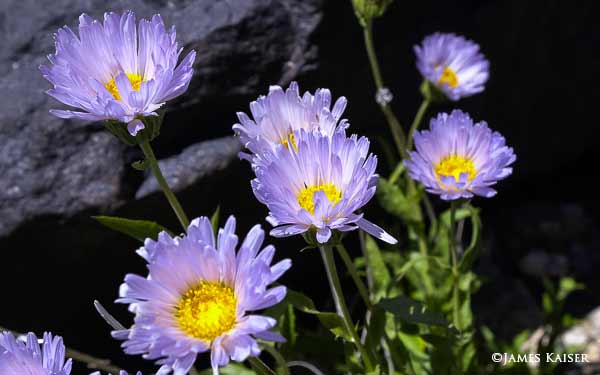
Mojave Aster
Mojave aster (Xylorhiza tortifolia) is often found on rocky hillsides in Joshua Tree National Park between 3,000 to 5,500 feet. The purple to pale-blue flowers, which grow up to two inches wide, feature a brilliant yellow center.
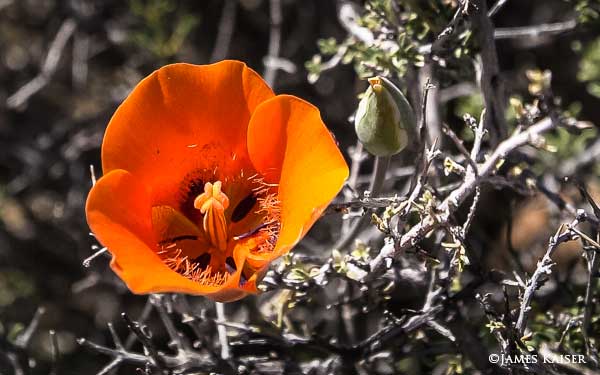
Mariposa Lily
The mariposa lily (Calochortus kennedyi) is easily identified by its vivid orange or vermilion flowers, which are one to two inches wide with three large petals. It is often found in creosote bush scrub or pinon-juniper woodlands, where it grows four to eight inches tall. Mariposa lilies were used as food by native tribes, who dug up the bulbs and roasted them. Mariposa is Spanish for “butterfly.”

Canterbury Bells
Canterbury bells (Phacelia campanularia) are one of the few blue wildflowers found in Joshua Tree National Park. Native to California, the delicate fluted flowers grow up to 1.5 inches long. They are most common on rocky slopes and sandy washes in the southern Mojave Desert. Following wet winters, thousands of canterbury bells can bloom at a single location.
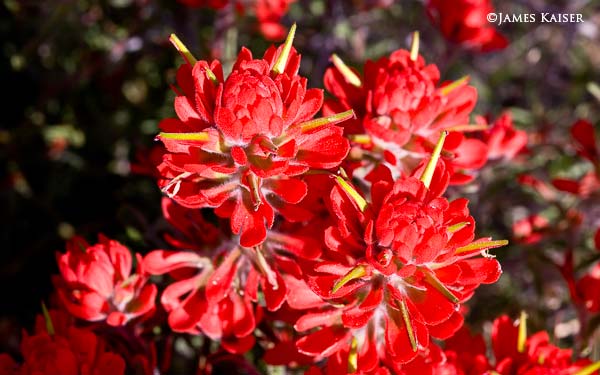
Desert Indian Paintbrush
The brilliant red flowers of Desert Indian paintbrush (Castilleja chromosa) feature inch-long petals bunched at the tip. Its stems, which measure up to 16 inches tall, often grow up through other plants and use them for support. Though common throughout the Mojave Desert, its range extends from Southern California to Canada.
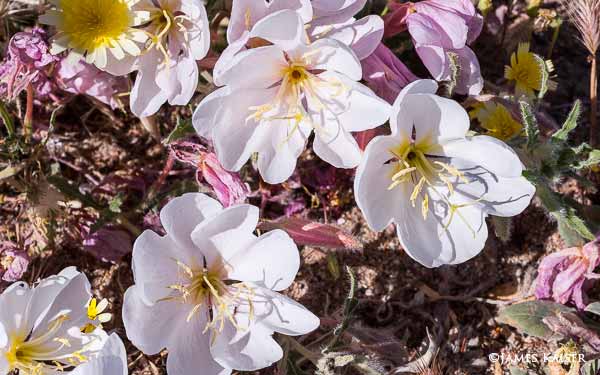
Birdcage Evening Primrose
These gorgeous white flowers, which grow two to three inches wide, have delicate petals the consistency of tissue paper. Dune primrose (Oenothera deltoides) grows close to the ground in sandy terrain. At night the flowers releases fragrance to attract the white-lined sphinx moth. When the flower dies, its stems curl up to form a hard globe, often referred to as a “birdcage.”

Beavertail Cactus
One of the most beautiful flowering plants in Joshua Tree, beavertail cacti (Opuntia basilaris) grow in dense clusters up to six feet wide. Vivid magenta flowers, two to three inches wide, appear on edges of broad, flat stems. Although typically spineless, beavertail cacti have small barbed bristles, called glochids, that can easily penetrate the skin. Native tribes used the fleshy pulp of the cacti to heal wounds.
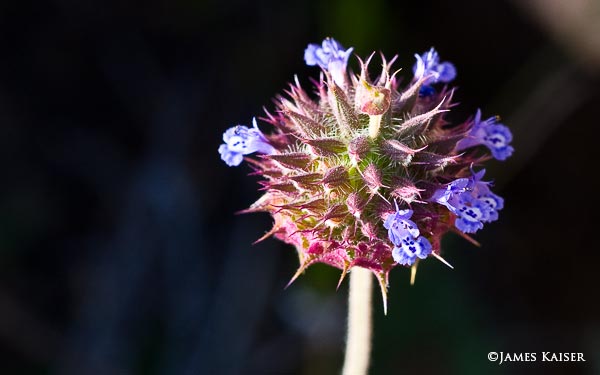
Chia
The unusual chia (Salvia columbariae) has tiny pale blue flowers that bloom from a pointy, globular cluster. Chia stalks grow up to 20 inches tall. Chia seeds were harvested by native tribes for food and medicinal purposes.
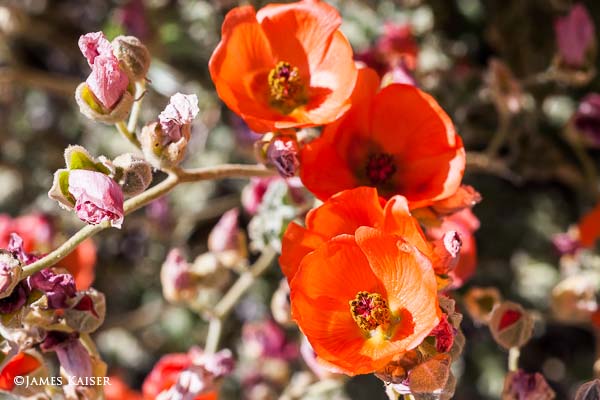
Globemallow
Desert globemallow (Sphaeralcea ambigua) is famous for its orange, globe-shaped flowers — a favorite of wildflower watchers. Also known as apricot mallow, desert globemallow is a small shrub that can grow up to three feet tall. It is often found on dry, rocky slopes in Joshua Tree National Park. Its stems and leaves are covered with small, star-shaped hairs.
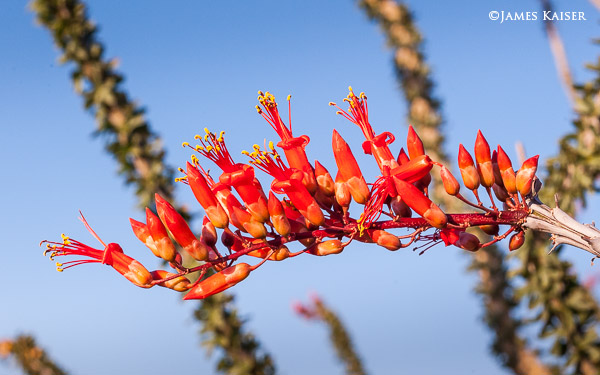
Ocotillo
Growing up to 30 feet tall, the spindly branches of the ocotillo (Fouquieria splendens) are one of the classic sights of the desert Southwest. Although the long, thorny branches appear dead and grey for most of the year, they flourish with bright green leaves after it rains. In the spring brilliant red flowers appear on the tips of its branches in the spring, giving the serpentine plant a fiery touch.
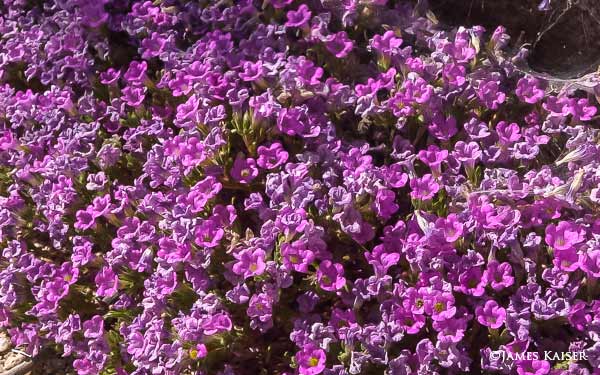
Purple Mat
These tiny purple flowers grow close to the ground, often as a densely packed mat. Purple mat (Nama demissum) is found in washes and sandy areas.
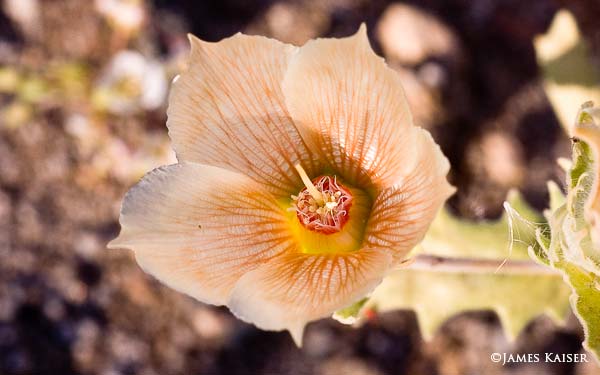
Sand Blazing Star
Sand blazing star (Mentzelia involucrata) produces cream-colored flowers that grow up to 2.5 inches long. The white seeds of its small fruit were an important source of food for native tribes. The seeds were toasted, then ground on a metate, resulting in a food with peanut butter-like consistency.
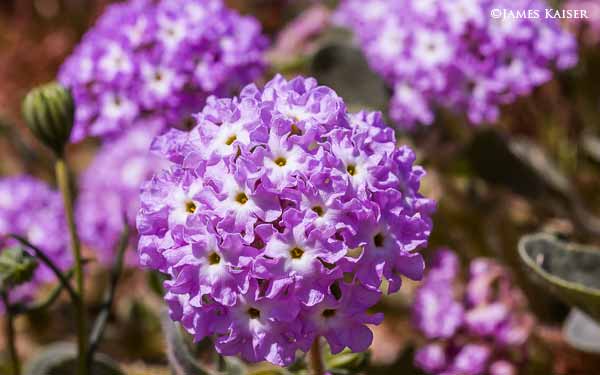
Sand Verbena
Sand Verbena (Abronia villosa) flourish in sandy areas such as dunes or washes. During big blooms the purple flowers carpet vast areas. During the day the tiny flowers’ vibrant colors attract pollinators. At night the flowers release fragrances to attract moths.
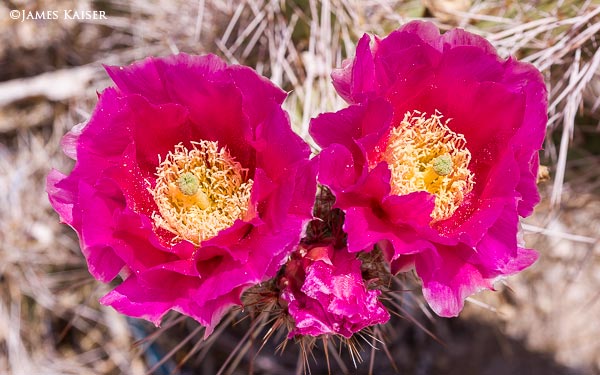
Hedgehog Cactus
The hedgehog cactus (Echinocereus engelmannii) grows in clumps of 5 – 15 small cacti, each supporting a single flower near the top. The pointed magenta flowers surround yellow stamens and green stigmas. Hedgehog cacti generally grow less than one foot tall, and spines grow up to three inches long. In Joshua Tree they bloom from May to June at elevations less than 2,400 feet.

